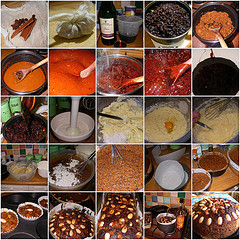
Image via Wikipedia
Baristas are trained in the art of making the perfect espresso. It requires a lot of patience and practice and is not easy to master. However, there is an easier way. An espresso machine. Espresso machines make espresso a much simpler beverage to create by controlling the temperature precisely.
There are several different types of espresso machines available, each functioning in a different manner. There are piston-driven espresso machines, semi-automatic machines, and automatic espresso machines.
In the Beginning
Espresso came into being when people were looking for a quicker way to make their coffee. In Italy, around 1901, Luigi Bezzera found a way to make hot pressurized water and its steam push through a bed of finely ground coffee. The result was a quick, individual cup of highly concentrated coffee that came to be known as espresso. Bezzera acquired a patent for his machine and in 1903 these first espresso machines were sold in Europe.
These machines were not easy to use. There was no consistency to the espresso produced because the temperature and steam were controlled by the operator, leaving room for a large amount of diversity in the resulting beverages.
In 1935 Illy invented a coffee maker that used compressed air instead of steam, thus solving the problem of exploding espresso makes. His machine gave a more favorable, stable result.
The lever action espresso machine was invented by Achille’s Gaggia in 1945 and still today bears his name. Both the Illeta and Gaggia versions of espresso machines are available on the market today.
Illy continued to expand and simplify his espresso machine by combining the best parts of other makers. [Read more…]


